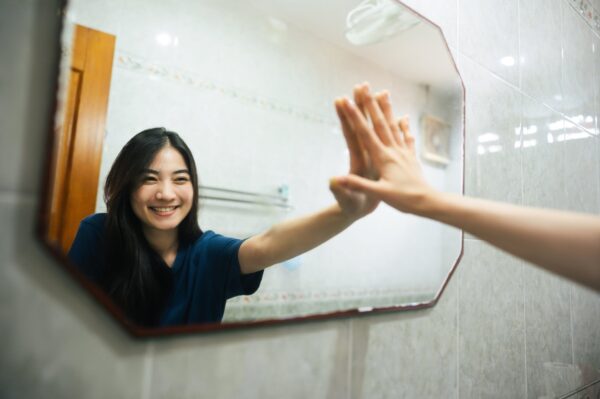In today’s digitally connected world, teenagers are inundated with images and messages that can significantly influence their perception of themselves. From social media platforms like Instagram and TikTok to advertisements, TV shows, and movies, teens are constantly exposed to idealized and often unrealistic portrayals of body types. These portrayals can shape their self-image, leading to body dissatisfaction, low self-esteem, and even mental health issues such as anxiety, depression, and eating disorders. Alpine Academy Utah reviews how promoting a positive body image among teens is essential in order to counteract these negative influences and foster a generation that values self-acceptance and well-being over unrealistic standards.
The Impact of Media on Teen Body Image
The media plays a powerful role in shaping societal norms and ideals, particularly around physical appearance. For teenagers, who are in a crucial developmental stage, these messages can be especially impactful. The constant exposure to edited and filtered images of celebrities and influencers who embody the “perfect” body can create an unhealthy comparison culture. Teens may begin to measure their worth based on how closely they align with these unrealistic standards, leading to feelings of inadequacy and low self-esteem.
Studies have shown a direct correlation between media consumption and body dissatisfaction among adolescents. A survey conducted by Common Sense Media found that over one-third of teens who use social media worry about their body image. Additionally, research published in the Journal of Youth and Adolescence revealed that exposure to idealized media images is directly linked to higher levels of body dissatisfaction and lower self-esteem in both boys and girls.
The Role of Social Media
Social media has a unique impact on body image due to its interactive nature. Unlike traditional media, where content is consumed passively, social media allows teens to engage with and create content that reflects societal ideals. The pressure to present a “perfect” image online can lead to harmful behaviors, such as excessive editing of photos, over-exercising, or restrictive dieting. The “likes” and comments on social media posts can further reinforce the idea that appearance is paramount, fueling the cycle of comparison and body dissatisfaction.
The rise of influencers and “fitness gurus” on platforms like Instagram has also contributed to the problem. While some influencers promote body positivity and self-acceptance, many others perpetuate unrealistic beauty standards, promoting products, diets, and workouts that promise to help followers achieve a certain look. For teens, who are still developing their sense of self, it can be difficult to discern the authenticity of these messages, leading to harmful behaviors in pursuit of an unrealistic ideal.
Strategies for Promoting Positive Body Image
- Media Literacy Education: One of the most effective ways to counteract the negative influence of media on body image is through media literacy education. Teaching teens to critically evaluate the content they consume can help them recognize the unrealistic nature of many media portrayals. Media literacy programs can encourage teens to question the validity of the images they see, understand the use of editing and filters, and recognize the commercial motives behind many of these portrayals.
- Encouraging Open Conversations: Parents, educators, and mentors should foster open and honest conversations with teens about body image. Discussing the impact of media on self-esteem, the importance of self-acceptance, and the diversity of body types can help teens develop a healthier relationship with their bodies. Encouraging teens to express their feelings and concerns about their body image can also provide valuable insights into the pressures they face and allow for targeted support.
- Promoting Body Positivity and Diversity: It’s important to expose teens to diverse representations of bodies in media and everyday life. Highlighting individuals who embrace their unique body types, regardless of whether they conform to societal standards, can help normalize the idea that beauty comes in all shapes and sizes. Encouraging teens to follow body-positive influencers and consume media that celebrates diversity can also help shift their perspective away from narrow beauty ideals.
- Modeling Healthy Behaviors: Adults play a critical role in shaping teens’ attitudes toward their bodies. By modeling healthy behaviors and positive self-talk, parents and educators can set an example for teens to follow. Avoiding negative comments about one’s own body or others’ appearances and instead focusing on health, strength, and well-being can help foster a more positive environment for teens to develop their self-image.
- Supporting Mental Health: Addressing the mental health aspects of body image is crucial. Providing access to counseling and support for teens struggling with body dissatisfaction can help them develop coping mechanisms and resilience against negative media influences. Schools and communities should prioritize mental health resources and create safe spaces where teens can seek help without judgment.
The Importance of Self-Compassion
Promoting a positive body image is not just about counteracting negative influences—it’s also about fostering self-compassion. Encouraging teens to be kind to themselves, focus on what their bodies can do rather than how they look, and appreciate their unique qualities can build a strong foundation for lifelong self-esteem. Teaching self-compassion can also help teens navigate the inevitable challenges and changes that come with growing up, including the pressures of social media and societal expectations.
In an age where media influence is pervasive, promoting a positive body image among teens is more important than ever. By equipping teens with the tools to critically evaluate media messages, encouraging open conversations, and fostering a culture of body positivity and self-compassion, we can help them build a healthy self-image. It is through these efforts that we can counteract the harmful effects of media while supporting teens in developing a strong sense of self-worth that is not tied to appearance but rooted in self-acceptance and overall well-being.
